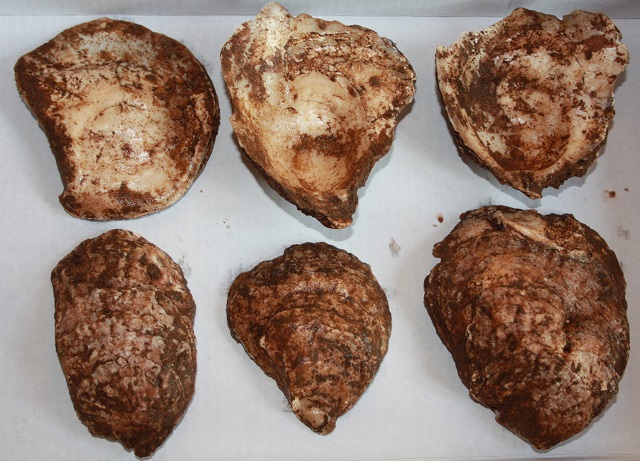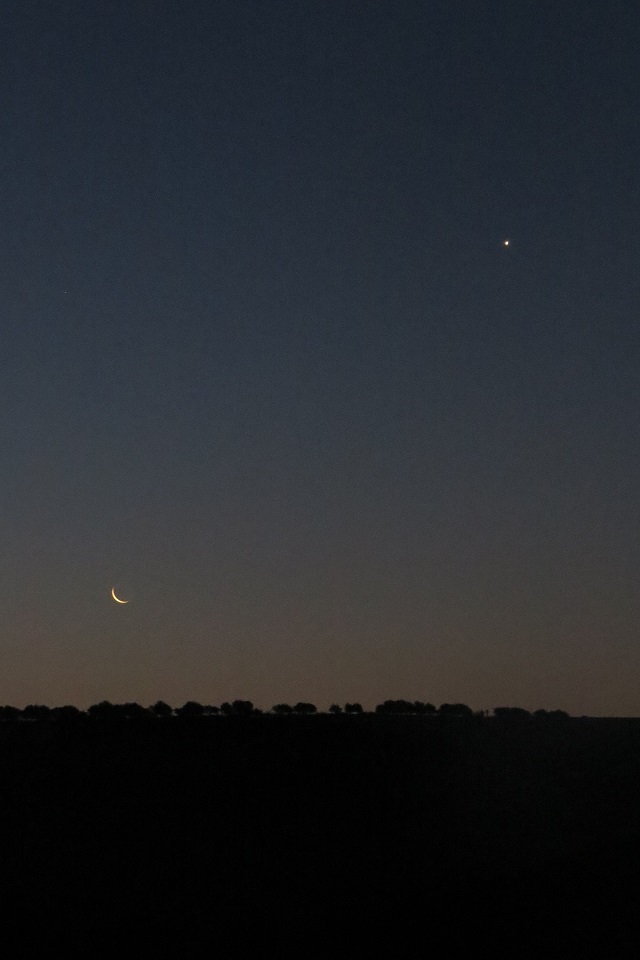Excavation of the large pit feature (that showed as an anomaly on the geophysical plot) is now well underway. Below an upper layer of mixed chalk and soil is a dark silty fill. Oyster shells are present in this feature. In this case they are surprisingly large and well-preserved, in contrast to the animal bones. Whilst many of these bones are sizable or complete they show the first signs of beginning to break down as a consequence of acids in the soil. There is a lot more of the fill of this feature to take out in the forthcoming days.
Trench C has meanwhile been getting progressively larger as Andy, Peter and Alan spaded and shovelled off more ploughsoil (the photos here show the trench at the start of the day). Careful cleaning which followed has revealed more Roman evidence: the remains of a wall foundation and the outline, in plan, of what could be a corn-drying oven. We will have more work to do to confirm these impressions. A corn-drying oven is a feature seen especially at some sites of the later Roman period in the countryside and was a low temperature oven conventionally thought to be used for drying or parching cereal grains to prevent them from germinating, so the grain might be stored, or for malting and brewing beer. Hence they may point to an excess of grain being grown at the time and employed to produce a non-essential product for cash sale or to fulfil a contract for the army. Another possibility was that such drying made it easier to de-husk the grains. Blog followers will know that we found features of this type at the Hatcliffe site last year.
Below the site is the Waithe Beck. Both it and the valley will have been a focus for human activity and settlement over millennia. We have found some flint tools and blades in our fieldwalking here that show there were people using this landscape in the Middle and Late Stone Age. They were not farmers but hunter-gatherers. In Modern times the Beck had several watermills along its course, including mills near our sites at Binbrook and Hatcliffe. We can see the windmill at Waltham from the Hatcliffe site. It is now a heritage centre. The ancient corn-drying ovens and quern stone finds we have made on this project, as with the watermills and windmills, are testimony to the deep importance of agriculture and the growing of cereals in this part of the world over centuries. The Romans might perhaps have had watermills on the Waithe beck but to search for those would be a something for another year.
A bit more information on the coin of Crispus featured previously … The obverse (front) of the coin shows Crispus holding a shield on his left arm and carrying a spear over his right shoulder. The inscription is IUL CRISPUS NOB CAES (Iulius Crispus Noble Caesar). At this point the Roman Empire was divided into two parts, eastern and western, each of which had a senior and junior emperor. Crispus (who was the eldest son of Constantine I) was junior emperor, or Caesar, of the western empire and had his base at Augusta Treverorum (modern Trier, in Germany) where this coin was minted. The reverse has the legend BEATA TRANQUILLITAS (Blessed Peace) and depicts an altar inscribed VOTIS XX (Votis Vicennalibus), meaning vows (prayers) for twenty years’ reign. This is a piece of political propaganda attributing peaceful times to the Emperor Constantine and therefore the desirability of his continued rule.
There is less light pollution at night in rural Lincolnshire than at some urban centres; the night sky is more strikingly visible and we include here a shot taken around dawn as it may also have been seen by our ancestors in prehistory and the Roman era.
The Dig Team




